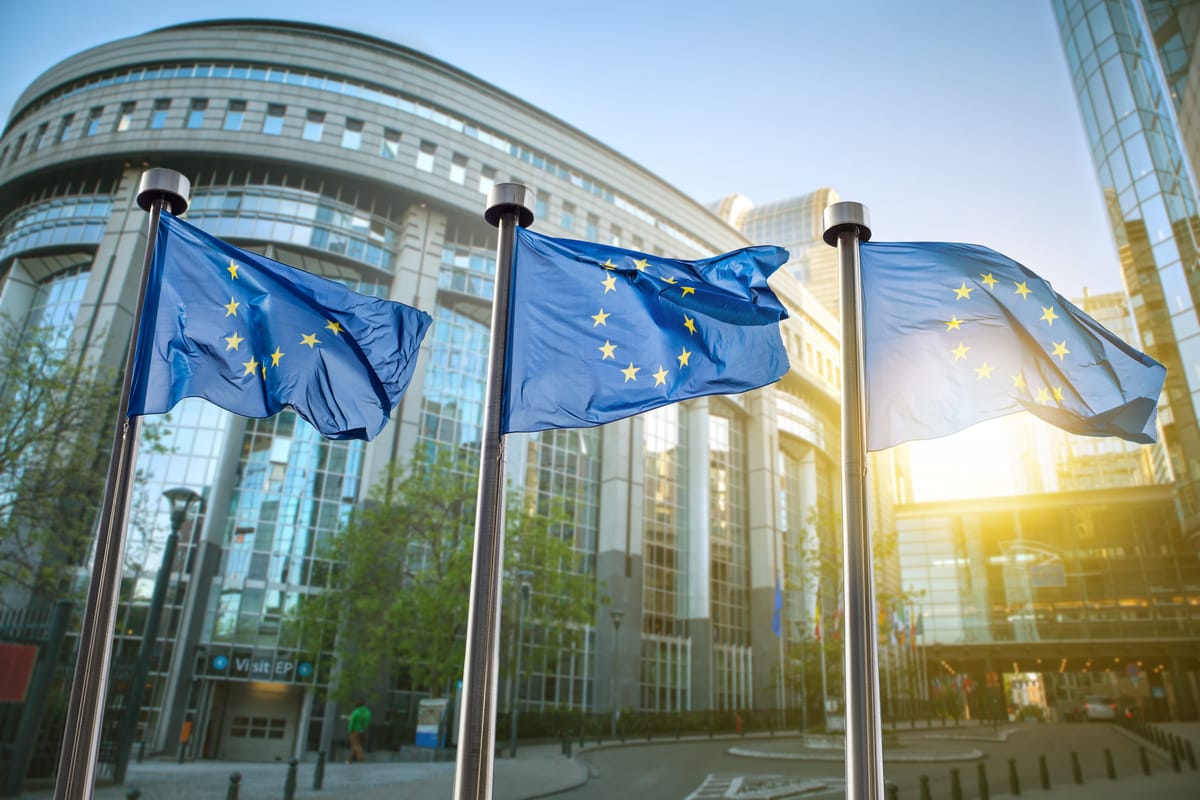This week, we explore what's driving a record cut in carbon emissions in the European Union, how Republican districts have disproportionately benefited from IRA investments, and how an artificial reef is making New York City more resilient to storm surges.
Follow Tectonic on Instagram and LinkedIn for regular updates about the innovators and innovations moving climate ambition into action.
European Union slashes emissions: The European Union experienced a decline in greenhouse gas emissions of more than 8% in 2023 driven primarily by the growth in renewable energy sources. This decline is the second-largest annual decrease in decades, following a 10% reduction in 2020 due to Covid and a 2% decrease in 2022 compared to 2021. Since 1990, emissions in the EU have fallen by 37%, despite a 68% increase in GDP during the same period. Renewable energy was the leading source of electricity production in the EU in 2023, accounting for nearly 45% of the total, and emissions from electricity production and heating decreased by 24% in 2023 compared to 2022. Emissions in various sectors also declined, including a 5.5% decrease in the buildings sector, a 2% decrease in agricultural emissions, and a less than 1% decrease in transport emissions. The EU's natural carbon sink also increased by 8.5% in 2023, reversing a trend of decline.
“We are on track to meet our 2030 targets to reduce emissions by at least 55% if this momentum is maintained. These positive results were driven in particular by the impressive growth in renewable energy sources.” - Tim McPhie, European Commission spokesman for climate action and energy
Republican districts are the biggest winners of the IRA: With an estimated $369 billion to $1 trillion in clean energy investments, the Inflation Reduction Act has spurred growth in solar panels, batteries, and electric vehicles across the United States. Though the act received no Republican support, red districts have emerged as the biggest winners, receiving three times as much clean energy and manufacturing investments as districts that leaned toward Biden. Congressional districts that favored Trump in the 2020 election have claimed around $165 billion of the investments, compared to $54 billion in areas where Biden came in first, and the top 10 districts that have attracted the most clean energy investments are led by Republican lawmakers.
Artificial reefs provide storm resilience in New York City: The "Living Breakwaters" project, a system of artificial reefs located about 1,000 feet off Staten Island, aims to protect residents from future storms and revive a damaged bay ecosystem. Funded with $111 million in Sandy recovery money, the project was conceived after Superstorm Sandy struck the city 12 years ago, causing significant damage and loss of life. The artificial reefs, designed by Pippa Brashear of Scape Landscape Architecture, integrate "living" features such as tidepools and textured surfaces to shelter oysters, crabs, and fish, and reduce daily erosion and damage from future storms. Unlike traditional breakwaters, the Living Breakwaters are designed to create a habitat for marine life, with features such as niches and crevices for juvenile fish to hide and refuge from predators. The Billion Oyster Project plans to add oysters to the reefs, which will help to clean the water and reduce the force of storms.
App helps homeowners conserve energy: HomeBoost has created a DIY kit called BoostBox that helps homeowners identify areas where their house is wasting energy and provides recommendations for improvement. The kit costs $99 and includes a thermal camera attachment that snaps onto a smartphone, allowing users to conduct a whole-house energy audit themselves, guided by a 30-minute step-by-step process through an app. The app uses the audit findings, climate and weather data, average cost of contractors, and rebate information to generate a report outlining potential solutions and their benefits, including investments and changes to achieve a more efficient home and cut energy bills.
Explore ways we can work together.
Making more flexible solar panels: Merlin Solar, a company founded in 2016, raised $31 million in a Series B round led by Fifth Wall to improve solar panel technology by making them more flexible and resistant to cracking. The company's panels are significantly lighter than traditional glass panels and have an adhesive on the back, allowing them to be attached to surfaces like a sticker. Merlin's flexible panels can follow the contours of different surfaces, making them suitable for installation on curved or irregular surfaces, such as the roof of an Airstream trailer.
Investing in power generation for big data: KKR and Energy Capital Partners (ECP) have agreed to invest a combined $50 billion in data center and power-generation projects to support the development of AI over the next four years. The companies are working with large tech companies to accelerate their access to electricity, which has become constrained in parts of the US. The investment will focus on both conventional power plants and renewables. ECP recently expanded its portfolio of natural gas-fired plants, which will be important in supplying round-the-clock power to data centers.
"Data centers are no longer a real-estate business. They are actually a power-first business. The status quo is no longer acceptable in solving this." - Waldemar Szlezak, KKR lead for digital infrastructure investments
Report says AI straining water supply: J.P. Morgan published a report in collaboration with sustainability consultancy ERM that attributes the increased strain on water resources to the growth of artificial intelligence (AI), which requires large amounts of water to cool data centers and for semiconductor manufacturing. Large data centers can use up to 5 million gallons of water per day, equivalent to the amount used by a town of up to 50,000 people, and billions of gallons of water are needed for semiconductor chip manufacturing. Climate change exacerbates the issue, leading to less reliable precipitation patterns and water shortages. Increased migration to warmer, water-stressed areas like Arizona and re-shoring manufacturing tasks are also contributing to US water challenges.
Britain experiments with programs to green its grid: Britain has set an ambitious goal to shift its electricity system away from burning fossil fuels by the end of the decade. To achieve this, the country is building more solar and wind projects, batteries, and transmission lines while also persuading millions of Britons of the financial benefit. Octopus Energy, the country's largest electricity supplier, is sending phone alerts to customers when wind power is cheap, offering discounts and encouraging them to use electricity during these times. Additional efforts include one by Ripple Energy allowing people to buy a piece of a wind turbine in exchange for discounted energy bills, a local cooperative in Grimsby that is investing in small solar projects to reduce bills for nearby charities, and a developer in North London that is selling homes run entirely on electricity with occupants receiving free electricity for at least five years.
Developers secure leases for floating wind farms in New England: Avangrid Inc. and Invenergy LLC units have secured leases to install wind turbines across approximately 439,000 acres in the Gulf of Maine following a US government auction. The two firms collectively pledged $22 million in winning bids for four of the eight available leases near Massachusetts, with an average bid of $50 per acre, which is considered relatively small. The sale results may reflect concerns about political risk in the US offshore wind industry and the technical challenges posed by the deep waters of the Gulf of Maine, which will require the use of relatively untested floating-wind technology.
India addresses potent greenhouse gas: India's government and power industry are considering a phase-down of sulfur hexafluoride gas (SF6), a potent greenhouse gas with a warming potential 23,500 times that of carbon dioxide. SF6 is used as an insulator in power transmission equipment, such as circuit breakers and switchgears, and its demand is increasing due to the government's push for broader electrification. The gas can linger in the atmosphere for more than 1,000 years and has high heat-trapping properties, accounting for 2.3% of global greenhouse gas emissions in 2019. Its use has increased rapidly over the past three decades. Other countries have already implemented regulations to phase out or limit the use of SF6, including the EU, which has set norms for a staggered phase-out of SF6-containing switchgears starting from 2026, and US states including California and Massachusetts.
Safeguarding seeds: The Svalbard Global Seed Vault in Norway, also known as the world's "doomsday garden shed," has received more than 30,000 new seed samples from around the world, bringing the total to approximately 1.3 million samples from 7,000 species. The recent deposit is one of the largest one-time additions since the vault opened in 2008, with 23 genebanks participating. The Svalbard Global Seed Vault serves as a secure genetic capsule, safeguarding crop diversity in case of a global catastrophe, such as climate change or a meteor strike, and is meant to be a last resort for humanity. The vault's organizers have extended their scope to reach out to developing countries and rural communities, protecting against the possibility of genebanks being destroyed by calamities such as severe weather, conflict, or equipment malfunction.
Learn more about Tectonic's creative agency.


